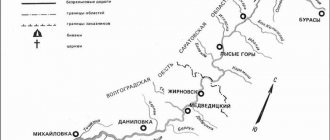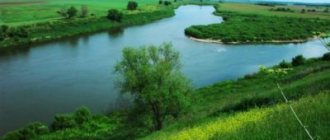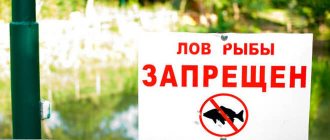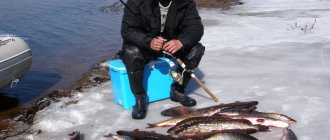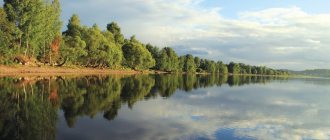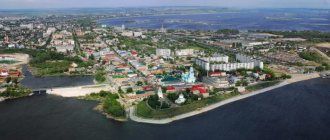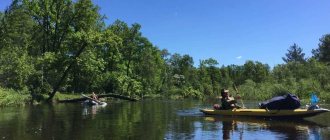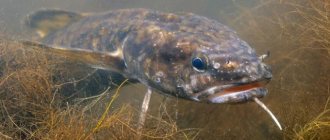Burbot spawning
Unlike most fish species, burbot spawns not in the spring, but in the winter. This is understandable - this only freshwater representative of cod in our country loves cold and frost, which is why the main habitat is the northern latitudes of our country. Burbot also lives in the middle zone; it can be found in deep reservoirs and large rivers, but less often. In the southern regions it is almost impossible to find this fish; only in exceptional cases can it be caught by a fisherman. The start time of burbot spawning often depends on these factors - in some places it occurs earlier, in others with a slight delay.
When does burbot spawning begin?
Burbot ranges in color from tan to brown or even dark olive, with black spots that provide camouflage. The pectoral fins and belly are pale white. It has a short dorsal fin followed by a long second dorsal fin, approximately 6 times the length of the first and connected to a rounded caudal fin. It has 67 to 96 soft dorsal rays and 58 to 79 soft anal rays. Burbot looks more like an eel than a freshwater fish. It has slimy skin and small scales. Burbot grows up to 1.5 meters in length and weighs up to 30 kg.
As mentioned above, burbot spawning directly depends on the region of its residence and the body of water it has chosen. Usually the peak of his spawning occurs in mid-January, however, there are a number of nuances here too. In the north, winter comes much earlier than in the south. As a result, burbot spawning begins in December, and in southern latitudes it can begin only in February. ⇓See below about the spawning period by region⇓
Usually, burbot begins to prepare for spawning after the water temperature drops below 5 degrees Celsius; it feeds intensively, gains weight, and gathers in schools, and the larger the individuals, the less numerous they are.
The most comfortable temperature for burbot spawning is +2 degrees Celsius. But water in the middle and southern latitudes almost never reaches this temperature; burbot has to spawn at +3-5 degrees, and often higher. Read also: Winter fishing for burbot on a donk
All this puts the burbot at a disadvantage relative to other underwater inhabitants, who can easily not only devour its eggs, but also deal with the young. However, deteriorating weather can provide some salvation for burbot - sharp frosts with pressure drops and changes in wind. While other fish feel discomfort, burbot can calmly spawn. This is interesting: Catching burbot using a snitch
Equipment and gear for burbot fishing
How to catch burbot? Since burbot goes hunting at night, fishing for burbot before dusk is not advisable.
In November, burbot can be caught using a bottom fishing rod and girders. The best bait for fishing for burbot at this time is a ruff (a delicacy for burbot), a piece of fish, a bunch of worms, and chicken intestines. Don’t forget that when fishing for burbot, the bait must lie on the bottom.
You can also catch burbot using a winter fishing rod equipped with a large diving spoon . Burbot loves everything shiny; silver spoons are especially good for fishing for burbot in the fall .
The sound of a bell when one part of the spoon hits another has an absolutely fascinating effect on it. For these reasons, many fishermen make their own spinners in such a way that, when playing with them, they produce the very sound that is loved by all burbots without exception.
No less successful is fishing for burbot using a heavy jig weighing 25–30 g with one large sharp hook. The fishing line needed for such fishing is 0.3 mm.
The main requirement for gear is strength, because... The burbot resists stubbornly.
The jig is first placed on the bottom, then, while playing, it is raised 10–15 cm and sharply lowered so that a plume of turbidity forms at the bottom. A short pause, and again the rise and sharp lowering of the jig.
If there is a burbot nearby, it will not take long to beg. And then the most interesting part – hooking and landing.
Fishing for burbot in the fall with moths is productive and interesting . A mote is a piece of 10 cm rubber hose, about 10 meters of 0.3 mm line, a sinker, a leash, a hook, and bait are wound around it. If you want to catch burbot, then place the bait on the bottom; if you want to catch other predators, raise it above the bottom by 10–15 cm.
, active fishing for burbot begins , this will give you a better chance of a successful catch. In addition, you need to stock up on heavy jig heads with a double hook, the fishing line should be chosen quite thick, because it is unknown how heavy the prey will be, its thickness should be approximately 0.4 mm.
You need to put a small fish on the hook, and you can cast the bait to depth.
Did you like the article? Subscribe to the channel to stay up to date with the most interesting materials
Where do burbot spawn?
Puberty in burbot begins only after reaching two to three years of age. Before the start of spawning, burbot begins to eat. He actively hunts, devouring everything that catches his eye. Mostly his lunch consists of:
- invertebrates living at the bottom of a reservoir;
- small fish, which with the onset of cold weather sinks into the bottom layers. His favorite delicacies are minnows, ruffs, perches, and gobies;
- crayfish;
- remains of fish and other dead meat rotting at the bottom. For this reason, burbot is often called the water orderly.
During spawning, burbot does not feed, but begins to feed only after the spawn is over. During these periods, the burbot bite is most active, but during spawning in most regions of the country, fishing for this fish is prohibited, regardless of whether the burbot bites or not.
Most often, burbot makes a pre-spawning move along the same route, rising upstream of the river. Moreover, one female can be followed by several males at once, who together fertilize her eggs. The spawning site is usually shallow areas of a reservoir with a hard bottom - rocky, pebbly, sandy, strewn with shells. The current is slow, since burbot is not particularly eager to spend energy fighting water flows. Read also: Fines for fishing with nets
Is it possible to catch burbot - terms and fines
Since in some regions the number of burbot is small, a spawning ban on catching burbot has been established by order of the Ministry of Agriculture of the Russian Federation.
- For one individual caught
, the fisherman will receive a fine of 500 rubles, regardless of weight and size. - According to the new taxes dated November 3, 2018, for damage to aquatic biological resources during the spawning period
, a fine for fishing is 1000 rubles per 1 kilogram.
This is interesting: How to hunt sable with traps and husky
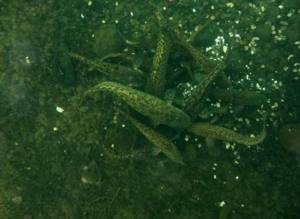
With the onset of prolonged winter cold, most fish become lethargic. However, the same cannot be said about burbot, which, on the contrary, only shows more activity.
Even more unusual phenomena include burbot spawning. When other representatives of the ichthyofauna do not even think about procreation, burbot begins to spawn.
And the colder the weather during this period, the more comfortable the spawning fish feels.
When does burbot spawning end?
In severe frosts (most often in northern latitudes), burbot spawning can last no more than 1-2 weeks, but in mid-latitudes and in the south this process can last up to a month. The largest individuals are the first to leave for spawning, and after them the young ones arrive. For this reason, the spawn run out of burbots ends at different times, as a result of which burbot can be caught throughout the entire freeze-up period. Most often, by mid-February the ban on burbot fishing is lifted everywhere, and anglers begin hunting for this fish. This is interesting: Recipe for making burbot fish soup
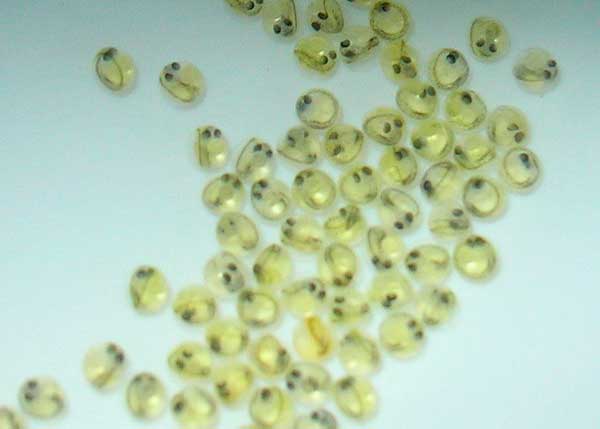
After the end of spawning, burbot rolls down to its usual places, where it begins to actively feed. He loves areas with an uneven bottom, many holes and ledges, littered with snags and other natural and artificial shelters. The objects of his lunch are:
- crayfish;
- half-asleep frogs and other amphibians;
- all kinds of leeches;
- shellfish;
- small fish;
- insect larvae.
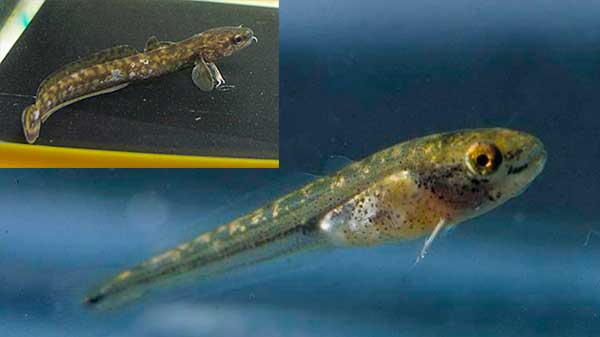
Spawning ban 2021 in the Yaroslavl region
Areas prohibited for extraction (catch) of aquatic biological resources:
- a section of the Kostroma River from the village of Krasny Bor to the mouth of the Andoba River upstream;
- a section of the Rybinsk reservoir in the downstream of the Uglich hydroelectric station at a distance of 500 m;
- section of the Gorky Reservoir: from the dam of the Volzhsky section of the Rybinsk hydroelectric complex downstream with a length of 500 m;
- the Sheksna River from the building of the Sheksninsky hydroelectric station at the Rybinsk hydroelectric complex to the mouth.
Prohibited periods (periods) of production (catch) of aquatic biological resources:
from April 15 to June 1 - in the Rybinsk Reservoir with all tributaries within the administrative borders of the Yaroslavl region, with all production (catch) gear, with the exception of production (catch) of one float or bottom fishing rod from the shore with a number of hooks of no more than 2 pieces on the fishing gear of one citizen outside the spawning grounds specified in Appendix No. 6 to the Fishery Rules “List of spawning areas located on water bodies of fishery significance in the Volga-Caspian fishery basin”;
from April 15 to June 15 - in the Gorky Reservoir and its tributaries for 25 km from the mouths upstream within the administrative borders of the Yaroslavl region, with all fishing gear, with the exception of fishing (catch) of one float or bottom fishing rod from the shore with the number of hooks of no more than 2 pieces on the fishing gear of one citizen outside the spawning areas specified in Appendix No. 6 to the Fishery Rules “List of spawning areas located on water bodies of fishery significance of the Volga-Caspian fishery basin”;
from October 1 to April 30 - in wintering pits specified in Appendix No. 5 to the Fishery Rules “List of wintering pits located on water bodies of fishery significance in the Volga-Caspian fishery basin”;
from April 20 to May 29 - in Lake Nero;
from April 20 to May 9, from May 25 to June 13 and from November 15 to December 24 - in Lake Pleshcheyevo;
from the melting of ice to June 10 - in other water bodies of fishery importance in the Yaroslavl region, with the exception of the production (catch) of one float or bottom fishing rod from the shore with a total number of hooks of no more than 2 pieces on the fishing (catch) gear for one citizen outside spawning grounds, specified in Appendix No. 6 to the Fishery Rules “List of spawning sites located on water bodies of fishery significance in the Volga-Caspian fishery basin”;
from December 15 to January 31 - burbot.
Types of aquatic biological resources prohibited for extraction (catch):
- sterlet, grayling;
- vendace in Lake Pleshcheyevo.
Minimum size of extracted (caught) aquatic biological resources (commercial size):
When carrying out fishing, it is prohibited to produce (catch), accept, process, transship, transport, store and unload aquatic biological resources that have a fresh length (in cm) less than that indicated in the table.
Name of aquatic biological resources / Commercial size, cm
- Asp 40
- Sudak 40
- Pike 32
- Freshwater catfish 90
- Sazan 40
- Burbot 40
- Chub 20
- Cancer 10
- Bream 30
The commercial size of aquatic biological resources is determined in fresh form:
- in fish - by measuring the length from the top of the snout (with the mouth closed) to the base of the middle rays of the caudal fin;
- in crustaceans, by measuring the body from a line connecting the middle of the eyes to the end of the tail plates.
Extracted (caught) aquatic biological resources having a length less than that indicated in the table are subject to immediate release into the natural habitat with the least damage.
The daily rate of production (catch) of aquatic biological resources (except for the case where such aquatic biological resources are subject to a permanent or temporary ban on production (catch) during recreational fishing) for each citizen during recreational fishing is indicated in the table:
Name of aquatic biological resources / Daily production (catch) rate
- Bream 5 kg
- Pike perch 5 kg
- Pike 5 kg
- Carp 5 kg
- Freshwater catfish 1 specimen
The total daily production (catch) rate for all types of aquatic biological resources (except for freshwater catfish), including those not listed in the table, is no more than 5 kg or one specimen if its weight exceeds 5 kg.
If the total daily norm is exceeded, the extraction (catch) of aquatic biological resources is stopped.
Burbot spawning period
The burbot spawning period is a prohibited time for catching this fish. Different prohibitions apply in different regions, so before you go fishing, it is better to study local laws so as not to turn from hunter to prey. It is unlikely that any respectable fishermen will want to be included in the “black list” and forever stick to themselves the shameful nickname “poacher”.
- In Bashkiria, burbot spawning begins at the end of December and lasts until mid-January. If the weather is cold, then spawning may end early, but with the onset of thaws it can last indefinitely;
- In Karelia, spawning for this representative of cod can begin in early December, if weather conditions are favorable, and last a couple of weeks, after which the ban on catching it is lifted;
- In the Perm region, the peak of spawning occurs in December - the fish rise to the upper reaches of rivers and settle in their usual places. Most often, these places are known to poachers, and then the burbot population can suffer significant damage;
- In the Leningrad region, burbot spawning begins in mid-December and lasts until mid-January, depending on the size of the individuals that went to the spawning grounds at different times: large specimens emerge first, small ones a little later;
- In the Vologda region, burbot spawning begins approximately in mid-January and lasts until early February. The fish at this time feels unhealthy, it loses a lot of strength and will take some time to recover;
- In the Urals, burbot spawning begins early - in early December. This is understandable; frosts in this region are often severe, which usually plays into the hands of this cold-loving fish;
- In central Russia, burbot begins to prepare for spawning towards the end of January. Spawning in this region can last until mid-February, and sometimes drag on until the end of the month, and sometimes until the beginning of March. This is due to the relatively warm winter. Video: Catching burbot on the oka video;
- On the Rybinsk Reservoir, burbot spawning extends from mid-December to mid-January. All this time, there is a ban on burbot fishing in the reservoir;
- Belarus has the most stringent restrictions on burbot fishing. Its spawning here stretches from the end of December to the end of February, and depends on the location and size of the reservoir. In this regard, the fishing ban begins to apply from the twentieth of December until the last day of winter.
Highlights of the burbot spawning period:
- Spawning of burbot begins in December-January;
- Lasts from two to four weeks;
- Ends in January-February;
- Comfortable water temperature for spawning is +2 degrees Celsius.
Why February is the coolest month
Experts say that burbot fishing in the winter months is not much different. But burbot is a non-standard fish, and it spawns not like everyone else - in winter, and it reaches its greatest activity in the coldest water.
If in December there is still mixing of water layers, its temperature is +6-8o C, then in the second half of January and February it drops to its minimum +1.
February is the month when both winter and spawning come to an end, and the fish are especially hungry. If you give a burbot a whole gudgeon in December, and a fatter one, in February it will bite on the tail that’s lying around.
